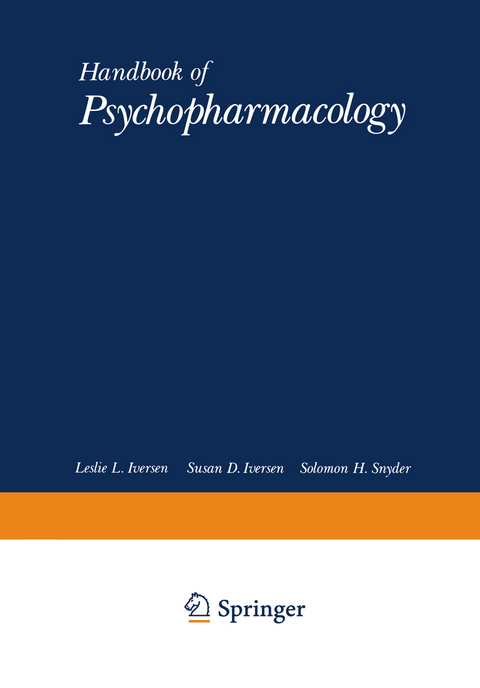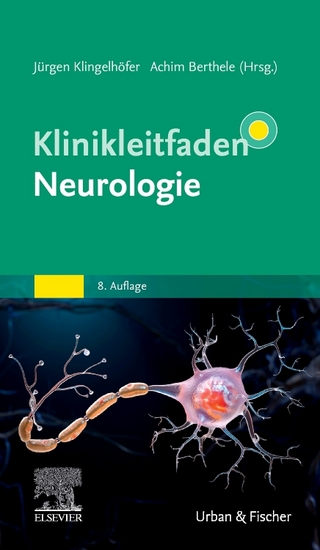
Biochemical Studies of CNS Receptors
Springer-Verlag New York Inc.
978-1-4684-4363-9 (ISBN)
1 Molecular Aspects of Neurotransmitter Receptors: An Overview.- 1. Receptor Recognition: Ion and Nucleotide Regulation Associated with “Second Messengers”.- 2. Solubilized and Purified Receptors Clarify Synaptic Mechanisms.- 3. Neurotransmitter Uptake Receptors.- 4. References.- 2 Opiate Receptors.- 1. Introduction.- 2. Scope and Limitations of Methods.- 3. Heterogeneity of Opiate Receptors.- 4. Distribution of Opiate Receptors.- 5. Properties of the Opiate Binding Sites.- 6. Isolation of Opiate Receptors.- 7. Assessment of the Pharmacological and Binding Properties of Narcotic Analgesic Drugs.- 8. Excitation Effector Coupling.- 9. Changes in Binding Sites Induced by Drugs or Pathological Conditions.- 10. References.- 3 CNS Dopamine Receptors.- 1. Introduction.- 2. Dopaminergic Agonists and Antagonists and Their Actions.- 3. Anatomy.- 4. Pharmacological Characterization of Dopamine Receptors.- 5. Dopamine Receptors in the Pituitary.- 6. Dopamine Receptors in the Striatum.- 7. Irreversible Modification of Dopamine Receptors.- 8. Solubilization and Isolation of Dopamine Receptors Ill.- 9. Neuroanatomical Localization of Dopamine Receptors in the CNS.- 5. Neostriatum.- 6. Substantia Nigra.- 7. Retina.- 1. Regulation of Dopamine Receptors.- 2. Concluding Comments.- 3. References.- 4 5-Hydroxytryptamine Receptors in Brain.- 1. Introduction.- 2. Serotoninergic Recognition Sites in the CNS.- 3. 5-HT-Sensitive Adenylate Cyclase.- 4. Mechanism of Regulation of Serotonin Receptors.- 5. Conclusions.- 6. References.- 5 Receptors for Amino Acid Transmitters.- 1. Introduction.- 2. GAB A Receptors.- 3. Glycine Receptors.- 4. Other “Inhibitory Amino Acids”.- 5. Excitatory Amino Acids.- 6. Summary.- 7. References.- 6 The Nature of Muscarinic Receptor Binding.- 1. Introduction.-2. The Binding of Antagonists.- 3. The Binding of Agonists.- 4. Regulation of Muscarinic Receptors by Guanine Nucleotides.- 5. The Influence of Sulfhydryl Reagents on Muscarinic Receptor Binding.- 6. Ionic Perturbation of Muscarinic Receptor Binding.- 7. Regulation of Antagonist Binding by Dopaminergic Agonists.- 8. Conclusion.- 9. References.- 7 Benzodiazepine Receptors.- 1. Introduction.- 2. Biochemical Characteristics of Benzodiazepine Receptor Binding.- 3. BZ Receptor Solubilization.- 4. Occurrence of BZ Receptors.- 5. Structural Selectivity of BZ Receptors.- 6. BZ Receptor Binding in Vivo.- 7. Multiple Brain BZ Receptors.- 8. BZ Receptors and GABA.- 9. Miscellaneous Modulators.- 10. In Vivo BZ Receptor Modulation.- 10.1. Subchronic Treatment with Benzodiazepines.- 10.2. Barbiturates.- 10.3. Ethanol.- 10.4. Diphenylhydantoin.- 10.5. Seizures and Other “Stress”.- 11. Endogenous Ligands?.- 12. Radioreceptor Assay.- 13. References.- 8 Histamine Receptors in Brain.- 1. Introduction.- 2. Classification of Histamine Receptors.- 3. The Histamine Hi-Receptor.- 4. The Histamine H2-Receptor.- 5. Psychotropic Drugs and Histamine Receptors.- 6. References.
| Reihe/Serie | Handbook of Psychopharmacology |
|---|---|
| Zusatzinfo | 6 Illustrations, black and white; XIV, 436 p. 6 illus. |
| Verlagsort | New York, NY |
| Sprache | englisch |
| Maße | 178 x 254 mm |
| Themenwelt | Medizin / Pharmazie ► Medizinische Fachgebiete ► Neurologie |
| Naturwissenschaften ► Biologie ► Biochemie | |
| ISBN-10 | 1-4684-4363-1 / 1468443631 |
| ISBN-13 | 978-1-4684-4363-9 / 9781468443639 |
| Zustand | Neuware |
| Haben Sie eine Frage zum Produkt? |
aus dem Bereich


